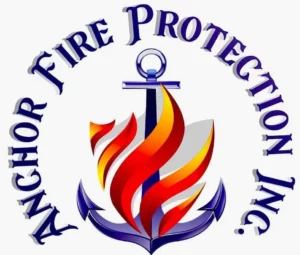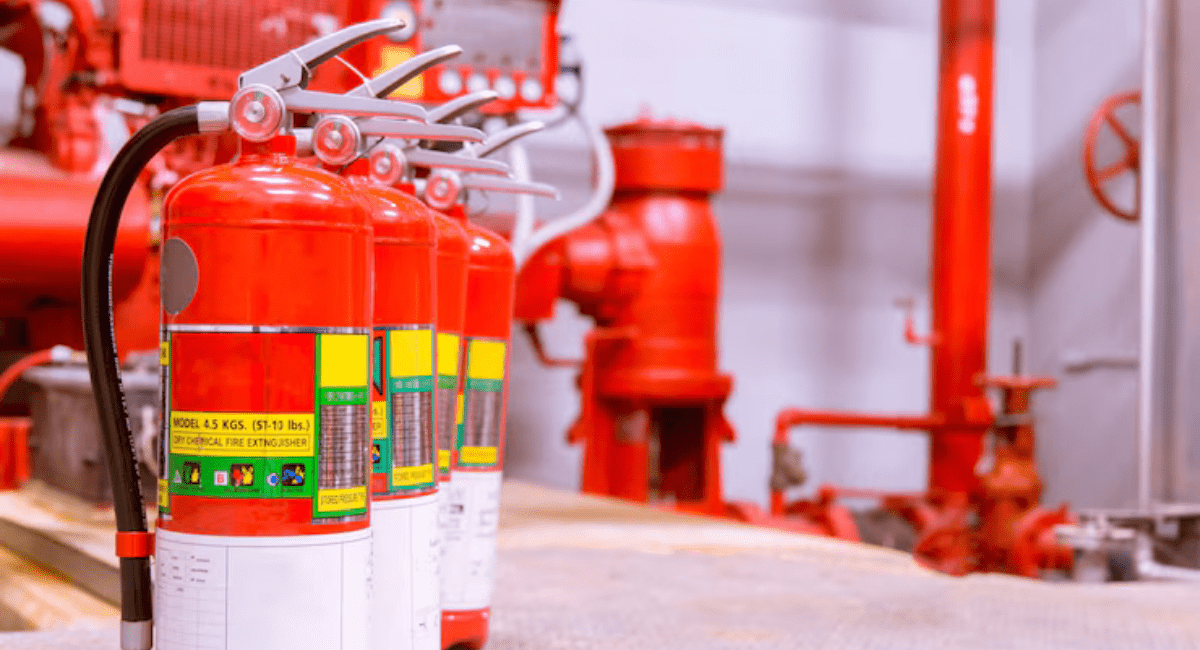What is fire protection system?
Fire extinguishers are efficient at extinguishing minor fires, however, they are not ideal for large or spreading fires. The fire protection system in your building or firefighters have to be called upon in such circumstances. Sprinklers, standpipes, and fire alarms are critical for detecting, controlling, and warning residents about fires. These systems are required in a variety of locations, including restaurants, retail businesses, day-care centers, and public gathering areas. A functional fire protection system helps to prevent fire-related injuries and fatalities.
Fire Protection Systems
The main objective of a fire protection system is to reduce the impact of a fire on people and property, according to the fire safety description. This is done by informing people about the presence of a fire, directing them away from dangerous areas, providing them with escape routes via emergency exits, and, ideally, controlling or extinguishing the fire. Several ways can be used to attain this goal, which are divided into two categories: active systems and passive systems.
1. Active Fire Protection System
Active fire protection systems combat fires by extinguishing, suppressing, or regulating them. These systems include dry chemicals, clean agents, automated fire sprinklers, and condensed aerosols. The most commonly used type of fire sprinkler is automated. Certain systems are categorized as alternative automated fire extinguishing systems and must comply to building and fire codes. These alternatives are commonly referred to as fire suppression systems.
2. Passive Fire Protection System
These systems, termed “passive” because of their quiet nature, are built into the structure, using fire and smoke-resistant materials and designs that do not require human participation. Their evaluation is based on their ability to resist standard fire exposure tests for a certain duration, and they are composed of non-flammable materials. Passive fire protection can be done in a variety of ways, including using fire doors to secure openings in fire-rated walls or floors, as well as protecting structural elements such as walls and floors. Finally, these systems are an important part of a building’s fire safety practices, protecting without drawing extra attention.
Fire is really powerful. It destroys buildings quickly, endangering life. However, there is hope. Fire protection systems are critical defenses. They detect, extinguish, and contain fires. Everything about these systems is covered in this blog post, from their components to their significance.
Fire Safety Equipment
Fire protection systems are not designed to be universally usable. They are built to meet the specific needs of a structure. Residential fire protection systems include the following fire protection equipment.
Smoke Alarms
Fire alarm systems are critical for safety since they detect smoke or heat and sound an alarm to warn people, potentially alerting the fire department. These systems include smoke detectors, heat detectors, manual fire alarm stations, and control panels. They are typically found in daycare facilities, restaurants, and high-rise structures. Their primary function is to alert people about smoke, fire, or toxic gases by detecting these threats and activating alarms and lights. They swiftly notify the residents and emergency personnel in case of an emergency.
Sprinkler Systems
Sprinkler systems are meant to spread water to extinguish fires and are available in a variety of designs suitable for homes, stores, restaurants, and childcare centers. They act swiftly to extinguish fires, considerably lowering heat, flames, and smoke. According to research undertaken by the National Fire Protection Association, areas with operable sprinklers can lower the probability of fire fatalities by 50-75% and damage losses by 50-66%.
Fire Extinguishers
Portable devices help to extinguish small fires before they spread. Different extinguishers work against different sorts of fires. Alarm systems have two basic functions: they activate fire suppression, sprinkler, or smoke control systems and inform the residents about a fire.
Smoke detectors, fire blankets, fire hoses, and fire escape ladders
Permanent or portable ladders known as “fire ladders” offer a secure means of escaping a building from an upper story. Firefighters utilize fire hoses, which are high-pressure hoses, to put out fires with water. Devices that detect smoke and emit an alarm are known as smoke detectors. Fire protection system components are essential to any plan for fire safety. Fire blankets that are resistant to fire, known as fire blankets, can be used to put out a minor fire. Information regarding fire exits, alarms, and other fire safety precautions is provided via fire safety signs.
Fire Doors, Walls, Floors, and Ceilings
Fire doors, walls, floors, and ceilings are designed to resist fire for a set amount of time, usually measured in hours within a building. A one-hour rated door, for example, can withstand fire for that length of time. These barriers must be completely intact, with no cracks or gaps. Fire doors, made of fire-resistant materials, are strategically positioned in areas where fires might spread quickly, such as stairwells and corridors. Examine them regularly and keep them closed.
Fire alarms for individuals with hearing impairments
Fire alarms developed for people who are deaf or hard of hearing may use flashing lights or vibrating devices to alert them during emergencies.
Fire protection system standards, developed by organizations such as the National Fire Protection Association (NFPA), specify the components required for various building types.
Commercial Fire Protection Systems
A commercial fire protection system is super important for any building. It keeps people safe and limits damage during a fire. A good system stops fires from starting, catches them early, and keeps them from spreading. It’s crucial to regularly check and maintain these systems to make sure they’re doing their job right. Commercial buildings usually need more advanced fire protection compared to homes. Let’s take a look at some common types.
Wet and dry pipe sprinkler systems
They are always filled with water and trigger as soon as a fire is detected. These pipes are used in freezing weather to hold compressed air until a fire causes water to be released.
Gaseous suppression systems
They use purifying substances such as CO2 or neutral gases to extinguish flames in sensitive places, such as server rooms, preventing water damage.
Emergency lighting
When a fire cuts power, buildings can become gloomy and difficult to manage. Emergency lighting provides a safe escape by providing illumination during power outages in exit routes, stairwells, and critical locations.
Fire suppression systems
These systems use specialized agents like foam or chemicals to extinguish flames, particularly in areas where water damage is a worry, such as computer rooms. They are quite efficient at preventing excessive damage.
Consultation with a trained fire protection expert is critical to ensuring that your facility has the appropriate system for its specific needs and follows any fire safety rules.
Why does every building need a fire protection system?
If a fire breaks out without anybody knowing, there will be crucial moments before anyone notices there is a fire. This is when a fire prevention system comes into operation.
- Smoke detectors and heat sensors detect the incident quickly, setting an alarm and enabling enough time to flee safely.
- Sprinkler systems respond quickly to fire detection, putting out flames and preventing their spread.
- These systems collaborate to ensure safe evacuation and enable firefighters to effectively combat the fire.
- They minimize damage to the building and its materials by containing the fire.
- A quick reaction to a fire can save severe damage and help businesses recover faster.
Additional Measures to Take for Fire Safety
Fire safety precautions don’t guarantee total security. Fire prevention is equally important. Consider the following steps:
- Non-water-based chemicals, such as clean gas or foam, can be used in fire suppression systems to extinguish flames, which is especially useful in areas with sensitive equipment.
- Special alarms detect carbon monoxide leaks and kitchen fires.
- Regularly inspect and maintain fire protection equipment.
- Educate residents on fire safety procedures and evacuation plans.
- Conduct fire drills to make sure that everyone knows what to do in an emergency.
- Remove fire hazards, such as unattended candles and overloaded electrical outlets.
Fire protection is improved in all situations when a fire protection system is combined with appropriate fire safety procedures. The risks and effects of fires are minimized by being aware of fire safety systems and taking preventive action. Anchor Fire Protection Inc. has years of experience providing full fire prevention services, including design, installation, maintenance, and repair. We provide the help and tools required to develop and maintain a dependable fire prevention strategy customized for your specific location, per local and national fire standards. Contact Anchor Fire Protection Inc. at +1818-337-3337 for more information and a free estimate, or visit our website.
FAQS
An accurate quotation is acquired by seeking quotes from skilled contractors. You need to consider the size of the structure, the required system type, and local construction codes. The final cost will depend on many factors, even if there are general standards (as for sprinklers, $1–3/sq foot).
Fire prevention systems detect, suppress, and control fires. Sprinklers automatically supply water, sirens notify people and firemen, and extinguishers are portable equipment used to quickly extinguish flames.
Fire prevention systems include both passive and active elements to prevent, delay, and extinguish fires. These components include fire separations in buildings, alarms, sprinklers, and extinguishers.
Fire alarms are the primary fire defense system. They are required in most buildings and are the first devices to sound the alarm when there is a fire.
KEEP YOUR PROPERTY SAFE
Related posts
-
Fire Safety Tips for the Workplace
-
Fire Safety Tips for Hospitals
-
How to size fire pumps?
-
Different types of sprinklers?
-
What is fire protection system?
-
Fire Extinguisher Inspection
-
Fire Sprinkler System Components
-
What are the most common types of fire pumps?
-
How much does a fire sprinkler system cost?
-
What is active and passive fire protection?

